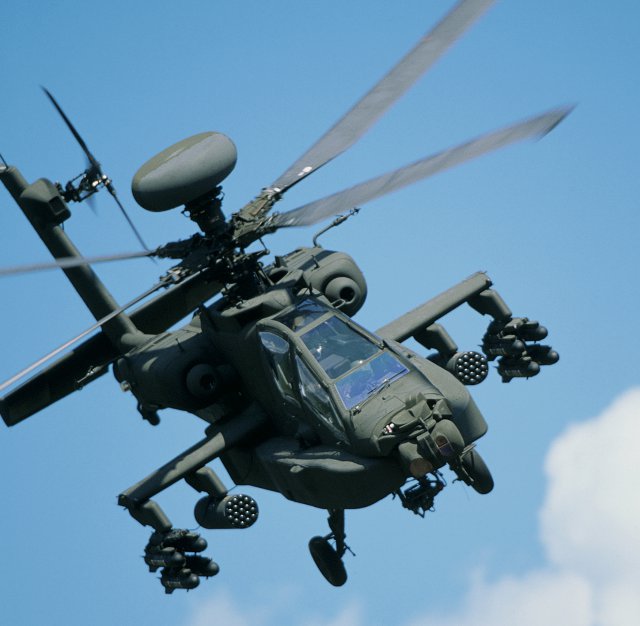 The US Army is taking a multi-pronged approach to upgrading its rotary-wing and unmanned aircraft fleets, investing in technologies that will not only allow helicopter pilots to monitor feeds from UAS, but also operate the sensors and weapon systems from safe distances.
The US Army is taking a multi-pronged approach to upgrading its rotary-wing and unmanned aircraft fleets, investing in technologies that will not only allow helicopter pilots to monitor feeds from UAS, but also operate the sensors and weapon systems from safe distances.
It’s all part of a plan that kicked into high gear in September 2011, when the Army’s Program Executive Office for Aviation conducted the first Manned-Unmanned Systems Integration Capability exercise. The event pushed the limits of moving video and images from ground-control stations to Boeing AH-64 Apache and Bell OH-58 Kiowa helicopters, which shared information with several UAS, including the Army’s MQ-1 Gray Eagle.
Since then, the Army has deployed two units to Afghanistan with manned-unmanned teaming (MUMT) capabilities, and is embarking on an ambitious programme to spread the capability across the entire service.
Part of the plan for integrating manned and unmanned assets involves upgrading the Apache fleet — specifically, building the AH-64E variant, dubbed the “Guardian,” to replace the “D” variant.
In the fiscal 2014 budget request, the Pentagon asked for $813 million to fund 42 remanufactured Block III Apaches that will be capable of linking with the service’s battlefield communications network it is fielding after a decade of development, while providing “Level 4” unmanned aerial system control that allows Apache pilots to control UAS from their cockpit.
Another $518 million in this year’s request would equip two Army companies with the General Atomics-built Gray Eagle, part of an effort to field Gray Eagles to 15 companies across the service. This would give every active duty division its own unit while equipping two companies of the 160th Special Operations Aviation Regiment. Overall, the Army plans to purchase 152 Gray Eagles.
The Gray Eagle companies will be staffed by 128 soldiers and contain nine UAS. When deployed, however, the companies will be beefed up by an additional platoon, or three more UAS each.
Given their mission set and anticipated operational needs, the two companies in the 160th will be given 12 Gray Eagles each, service leaders have said.
Two Gray Eagle-equipped companies have deployed to Afghanistan: F Company of 1st Attack Reconnaissance Battalion, 1st Aviation Regiment deployed earlier this year; the F/227th Aviation Regiment of the 1st Cavalry Division, attached to the 101st Combat Aviation Brigade (CAB), is wrapping up its yearlong deployment.
The 101st CAB not only deployed with Gray Eagles, but it also headed downrange with a Shadow UAS troop and the latest Apache and Kiowa Warrior helicopter variants that could perform manned and unmanned teaming operations.
The Apache Guardian has already proved the ability to connect a pilot with a Gray Eagle at distances of up to 70 miles, while allowing the pilot to control the UAS’ sensors and weapons systems.
Although the Army has already received 33 AH-64E Apaches, there is still a requirement for 56 new builds for a total of 690 aircraft, Col. Jeff Hager, the Army project manager, Apache Attack Helicopters, told reporters.
The remaining 634 aircraft will be remanufactured AH-64D airframes, and “the Army is in the process of contracting the new builds with Boeing right now,” he said, adding that the remainder of the buys have “moved out past the 2018 [budgeting] time period.”
The current Apache AH-64D models with a newer MUMT capability, as well as the Kiowas with their MUM software packages, can receive and retransmit full-motion video from the Gray Eagles and Shadows, while also pulling in full-motion video feeds from several Air Force platforms, such as the A-10 and the F-15.
Source: Defense News
